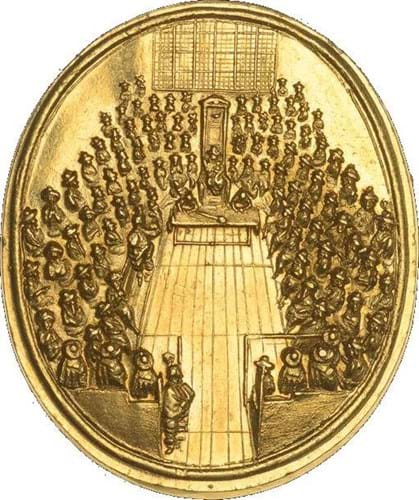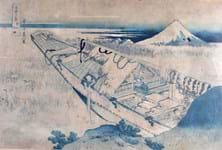To one side is the bust of Oliver Cromwell with a battle scene in the background and the words Lord of Hosts Dvnbar Septem y 3 1650. To the other is a view of the Long Parliament – a scene that also appears on a Cromwellian naval award.
It is one of the many creations of Thomas Simon (c.1623-65), the chief engraver to the Mint who prepared the dies for the Commonwealth coinage.
Dunbar medals are very rare: just one each are known in silver, copper, pewter and alloy and three in gold. This particular example, deemed ‘extremely fine’, has a provenance back to the sale of the Earl of Pembroke collection at Sotheby’s in 1848.
It was one of the many outstanding coins and medals from the Interregnum offered by Dix Noonan Webb (24% buyer’s premium) in London on January 21 during the fourth and final part of the so-called North Yorkshire Moors collection. That auction also featured the 50 Shillings coin sold for a record £380,000 (see last week’s News, ATG No 2478) – another Thomas Simon design.
The collection had been amassed by Marvin Lessen, an American who began seriously collecting British coins after moving to Scarborough in 1962.
Estimated at £10,000-15,000, this medal sold at £16,000.
Resounding victory
The Battle of Dunbar was fought between the New Model Army under Cromwell and a Scottish army commanded by David Leslie on September 3, 1650. It is considered the first major battle of the Third English Civil War which followed Scotland’s acceptance of Charles II as king after the regicide of Charles I.
It was a decisive victory for Cromwell: in addition to the many killed and wounded, at least half of the Scottish army of around 12,000 was taken prisoner.
















